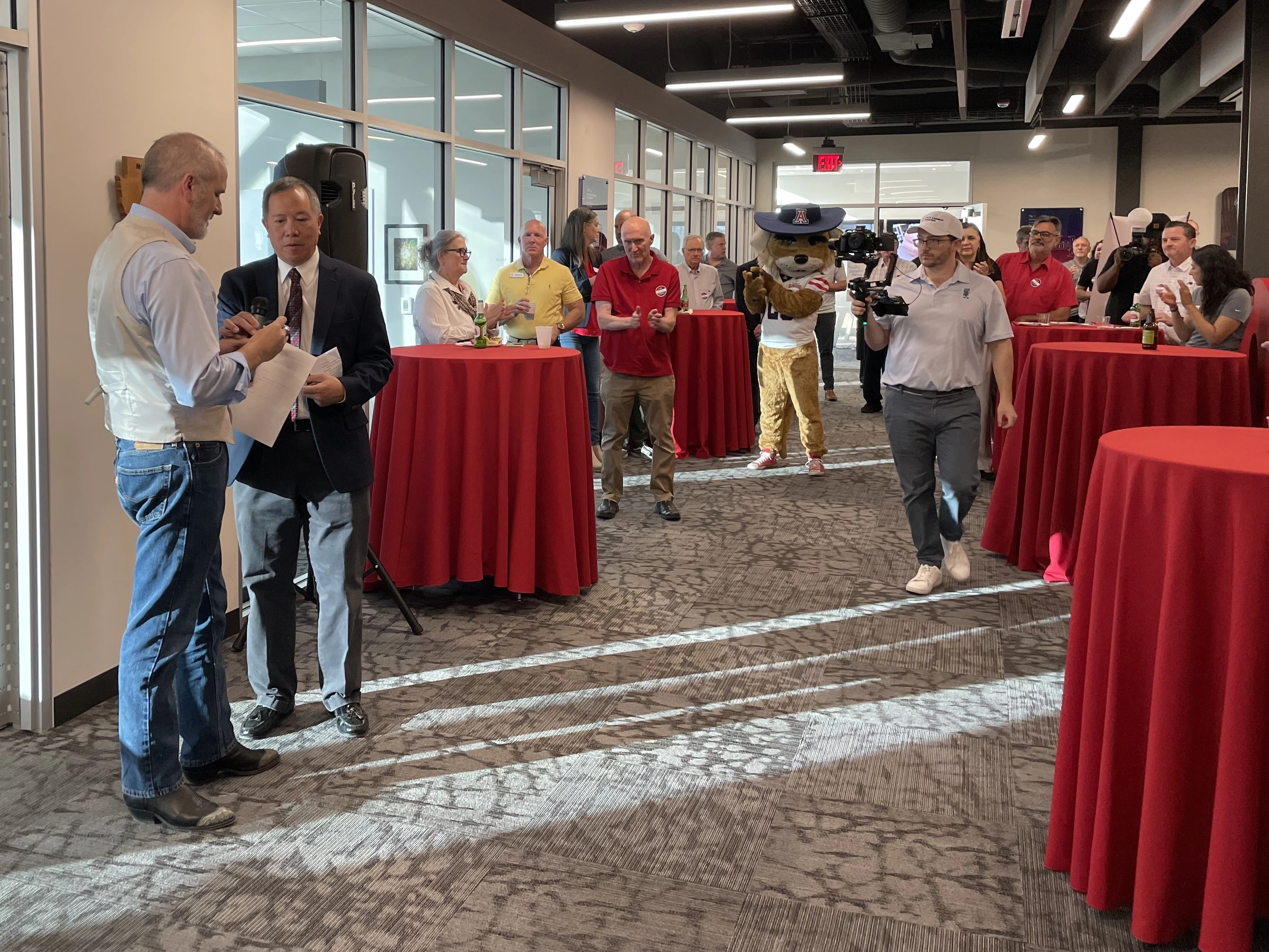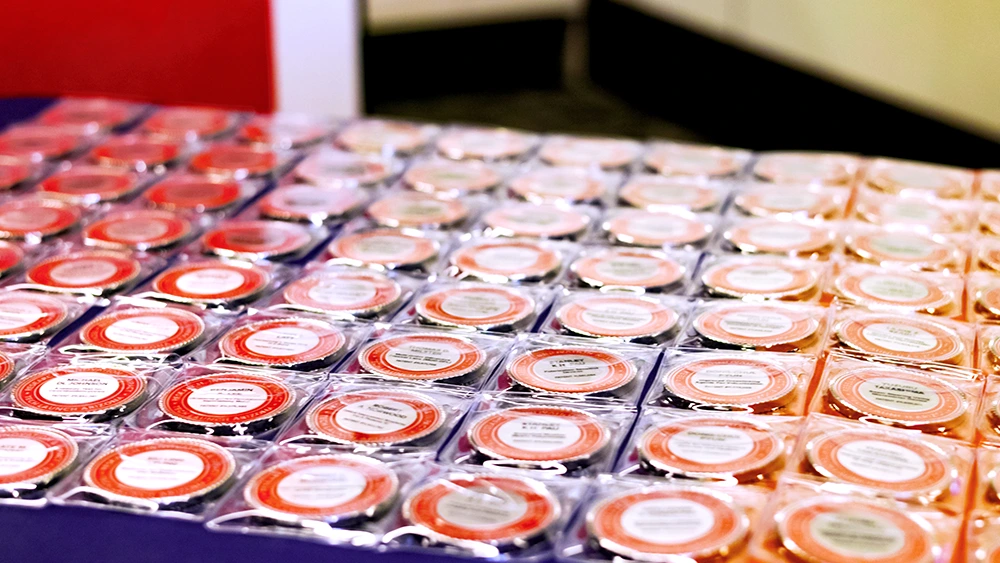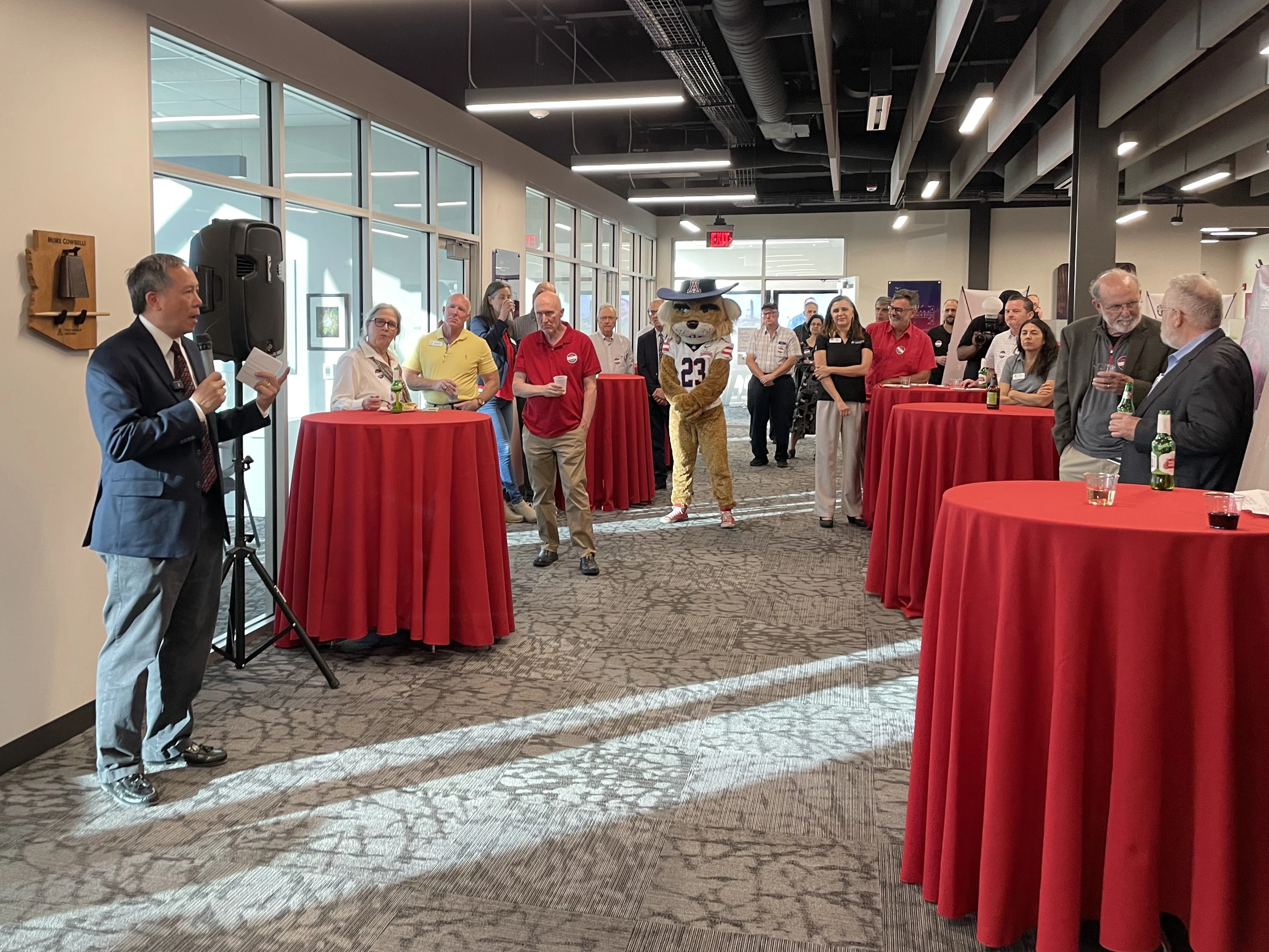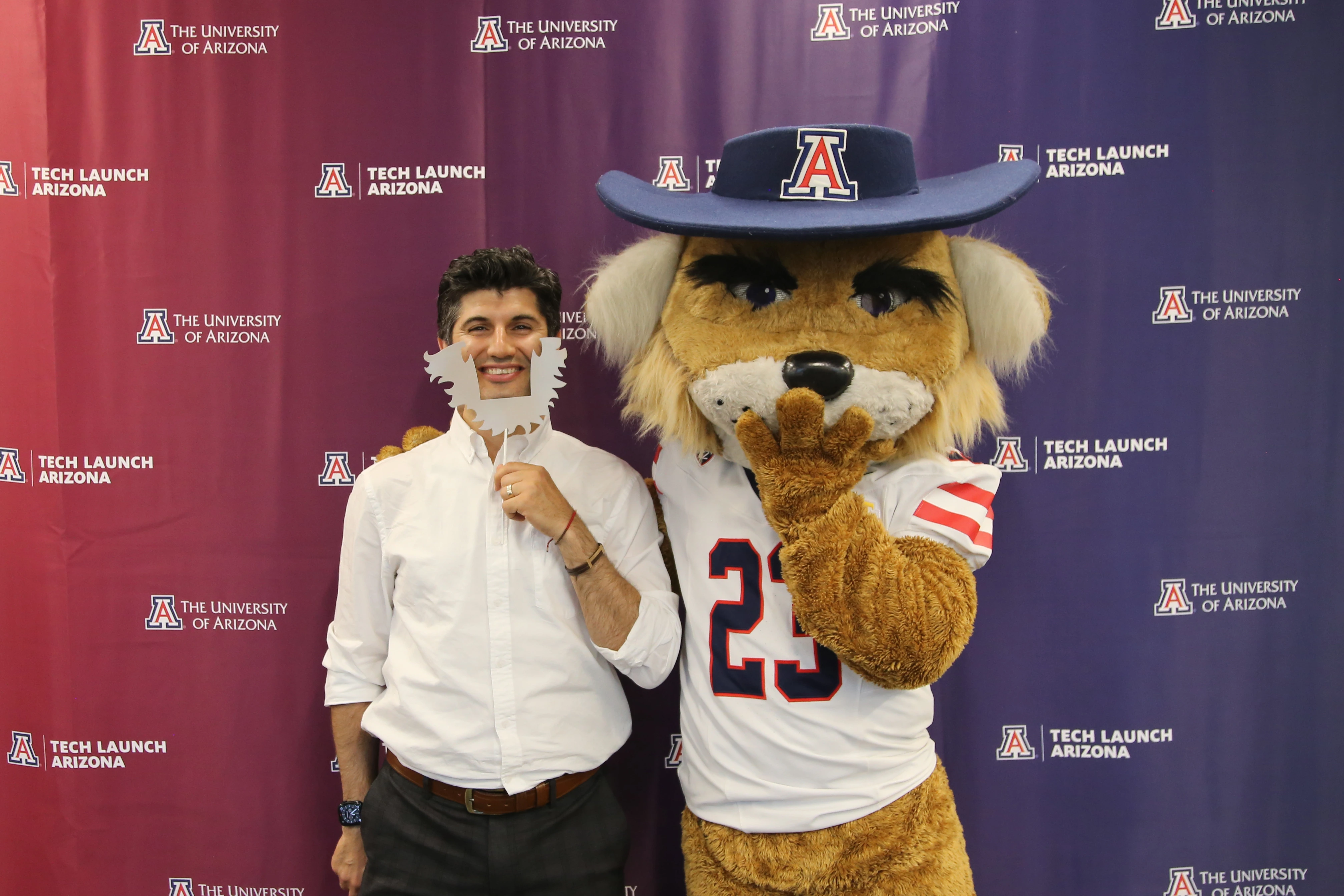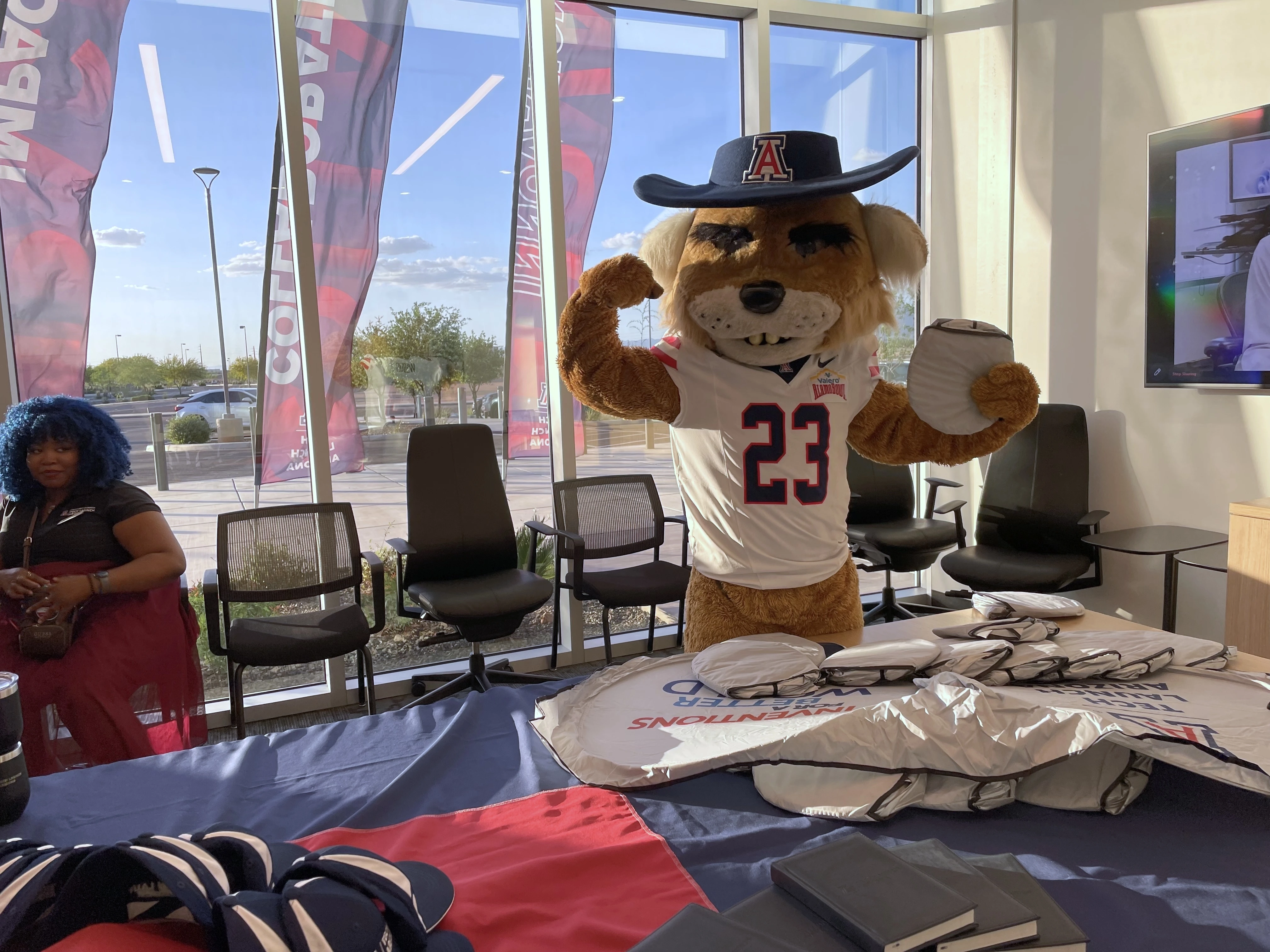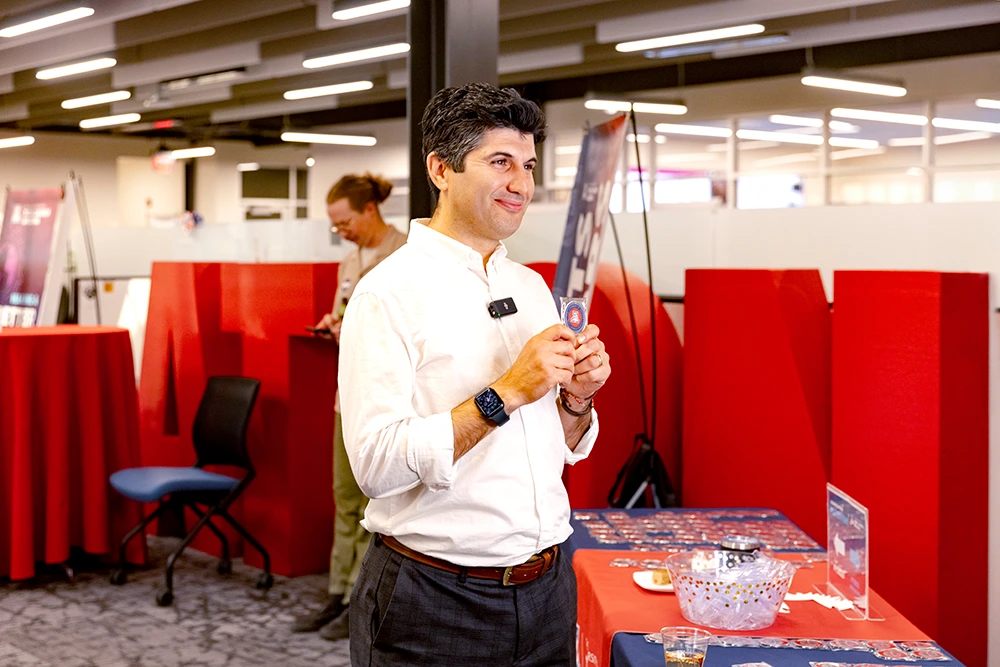University of Arizona patent-earning inventors celebrated for their innovation and impact
Tech Launch Arizona recognized over 70 faculty and staff innovators who received patents in the past year at its World Intellectual Property Day celebration.
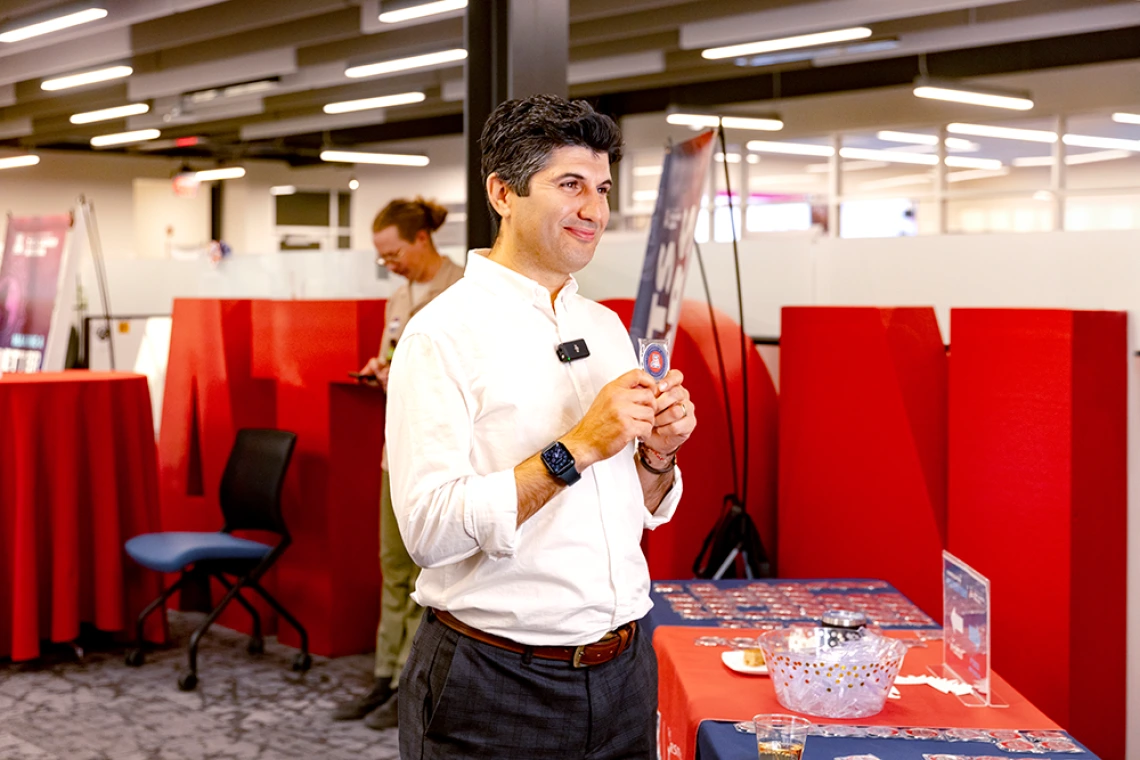
Iman Daryaei poses with his new patent coin.
Tech Launch Arizona
Each year April 26 commemorates World Intellectual Property Day to highlight the importance of intellectual property (or “IP”) in inspiring innovation and creativity, and recognizing the impact that such work contributes toward a better world for all.
To recognize the day, Tech Launch Arizona (TLA), the office of the University of Arizona that commercializes inventions stemming from university research and innovation, held a celebration at its offices in The Refinery at the UA Tech Park at The Bridges honoring inventors who had received patents in the past year. During this annual celebration, TLA presents individual inventors with a custom challenge coin minted with their name and the title and number of their patent.
Between July 1, 2022, and June 30, 2023, the U.S. Patent and Trademark Office (USPTO) issued more than 100 patents developed by over 70 UArizona innovators; their inventions range from medical imaging innovations to a new kind of head-mounted projection display to an antibody test for Valley Fever.
Today, the work of TLA has helped the UArizona become a national leader in commercialization, typically ranking in the top 50 universities in the nation and around the globe receiving U.S. utility patents.
“We are nationally and internationally recognized for the number of patents that get issued every year,” said Associate Vice President of TLA Doug Hockstad, noting that innovation comes from every sector of the academy, from life sciences to physical sciences to software. “We get inventions from all across the university; we get them from student services, from colleges and units, from everywhere. But by far the lion's share comes from research and the work that those investigators are doing.”
In FY2023, the UArizona reported research expenditures of $954 million. That research represents raw input for innovation to grow the future impact of the university through the work of technology commercialization.
Interim Senior Vice President for Research and Innovation Elliott Cheu said in his address to attendees, “The idea that we can take the amazing research of the university, commercialize it, and bring it to the general public is a noble mission and is something that we will continue to prioritize.”
Patents and Exclusive Rights to Inventions
A patent grants exclusive rights for an invention, which is a device or process that defines a new way of solving a problem or doing a task. To receive a U.S. patent, an invention must be disclosed and go through a rigorous approval process involving professional reviewers at the U.S. Patent and Trademark Office.
TLA facilitates the entire intellectual property protection process for UA inventors, according to Director of Licensing and Intellectual Property Rakhi Gibbons. She said that getting a patent issued takes creativity, strategy, and persistance, and TLA’s focus is on providing expert guidance and service to help that happen as efficiently as possible.
But all of that work is in support of a bigger mission.
“We are thinking about how we can change the world,” she said in her comments at the event. “How can we make the world better for all of us? To our wonderful researchers turned inventors, we have you to thank for all the discoveries you're making.”
From the Bayh-Dole Act to Impact
In 1980, the US Congress passed the Bayh-Dole Act, a law that tasks universities with working to license inventions arising out of federally-funded research and development to companies that can bring them to the market for the public good.
As a result, universities around the nation created technology transfer offices or “TTOs” to work with their research and development communities and ensure that this work would be done and that the public would reap the benefits of federally-funded research and discovery.
Since 2013, TLA has worked with over 2800 invention disclosures and had over 650 patents issued. The office has executed over 550 exclusive licenses and options and helped launch nearly 140 startups. A recent economic impact study showed that over just a five-year period that work has supported over 2,500 jobs and generated an economic output of $1.6 billion.
“We’re proud to be the embodiment of the university’s mission of creating impact from research and innovation,” said Hockstad, “and look forward to continuing to play that essential role going forward.”
In a statement released on April 26, 2024, Executive Director of the Bayh-Dole Coalition Joseph P. Allen commemorated World Intellectual Property Day saying, “The 24th annual World Intellectual Property Day is a time to celebrate intellectual property rights. Every day, these legal safeguards advance science, innovation, and the global economy … The law paved the way for more than four decades of innovation. By empowering these federally-funded institutions to retain and license federally-funded patents, Bayh-Dole spurs the translation of basic research into real-world technologies every day — and has generated $1 trillion in GDP and 6.5 million jobs for the U.S. economy over the last 43 years.”
FY2023 Patent Coins Awarded


